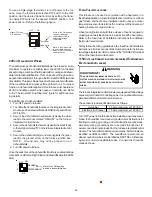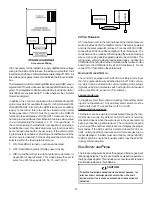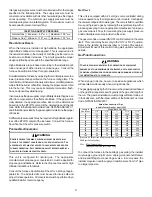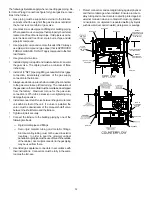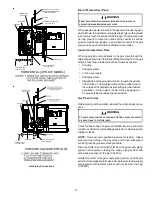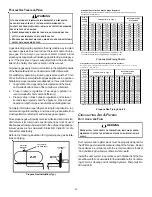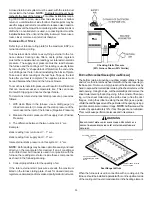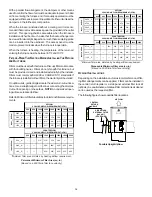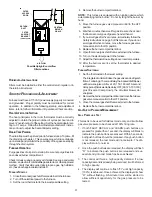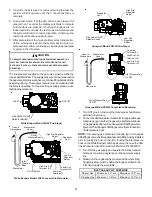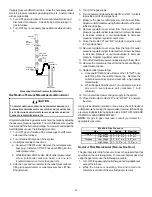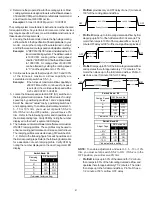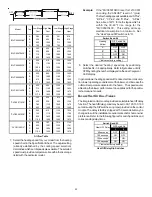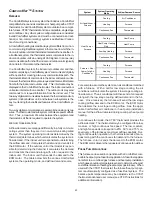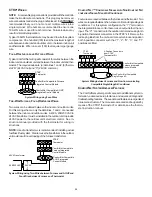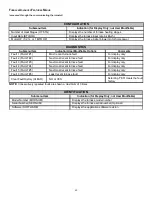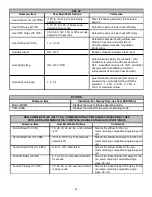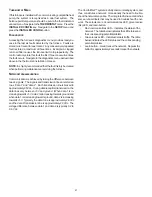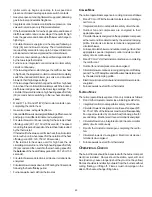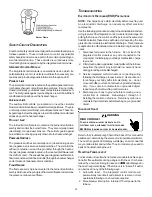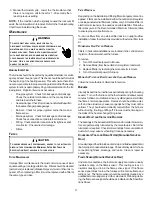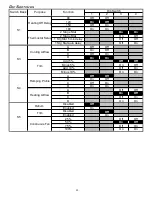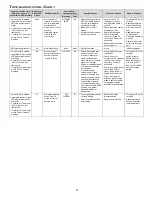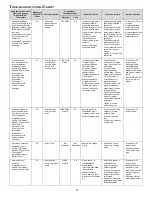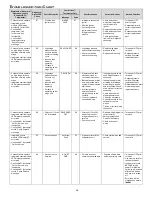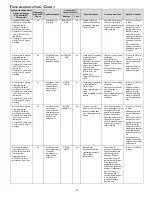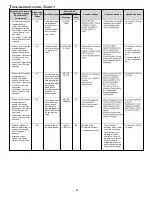
43
C
OMFORT
N
ET
™ S
YSTEM
O
VERVIEW
The ComfortNet system is a system that includes a ComfortNet
compatible furnace and air conditioner or heat pump with a CTK0*
thermostat. A valid ComfortNet system could also be a compat-
ible furnace, CTK0* thermostat and non-compatible, single stage
air conditioner. Any other system configurations are considered
invalid ComfortNet systems and must be connected as a tradi-
tional (or non-communicating) system (
see Electrical Connec-
tions
for wiring connections).
A ComfortNet heating/air conditioning system differs from a non-
communicating/traditional system in the manner in which the in-
door unit, outdoor unit and thermostat interact with one another. In
a traditional system, the thermostat sends commands to the in-
door and outdoor units via analog 24 VAC signals. It is a one-way
communication path in that the indoor and outdoor units typically
do not return information to the thermostat.
In a ComfortNet system, the indoor unit, outdoor unit, and ther-
mostat comprising a ComfortNet system “communicate” digitally
with one another, creating a two-way communications path. The
thermostat still sends commands to the indoor and outdoor units.
However, the thermostat may also request and receive information
from both the indoor and outdoor units. This information may be
displayed on the ComfortNet thermostat. The indoor and outdoor
units also interact with one another. The outdoor unit may send
commands to or request information from the indoor unit. This
two-way digital communications between the thermostat and sub-
systems (indoor/outdoor unit) and between subsystems is the
key to unlocking the benefits and features of the ComfortNet sys-
tem.
Two-way digital communications is accomplished using only two
wires. The thermostat and subsystem controls are power with 24
VAC. Thus, a maximum of 4 wires between the equipment and
thermostat is all that is required to operate the system.
A
IRFLOW
C
ONSIDERATIONS
Airflow demands are managed differently in a fully communi-
cating system than they are in a non-communicating wired
system. The system operating mode (as determined by the
thermostat) determines which unit calculates the system air-
flow demand. If the indoor unit is responsible for determining
the airflow demand, it calculates the demand and sends it to
the ECM motor. If the outdoor unit or thermostat is respon-
sible for determining the demand, it calculates the demand
and transmits the demand along with a fan request to the
indoor unit. The indoor unit then sends the demand to the
ECM motor. The table below lists the various ComfortNet
systems, the operating mode, and airflow demand source.
System
System Operating
Mode
Airflow Demand Source
Cooling
Air Conditioner
Heating
Furnace
Continuous Fan
Thermostat
Cooling
Heat Pump
Heat Pump Heating
Only
Heat Pump
Auxiliary Heating
Furnace
Continuous Fan
Thermostat
Cooling
Furnace
Heating
Furnace
Continuous Fan
Thermostat
F Non-
Comm 1stg Air
Conditioner
Air Conditioner +
Furnace
Heat Pump +
Furnace
For example, assume the system is an air conditioner matched
with a furnace. With a call for low stage cooling, the air
conditioner will calculate the system’s low stage cooling air-
flow demand. The air conditioner will then send a fan request
along with the low stage cooling airflow demand to the fur-
nace. Once received, the furnace will send the low stage
cooling airflow demand to the ECM motor. The ECM motor
then delivers the low stage cooling airflow. See the appli-
cable ComfortNet air conditioner or heat pump installation
manual for the airflow delivered during cooling or heat pump
heating.
In continuous fan mode, the CTK0* thermostat provides the
airflow demand. The thermostat may be configured for a low,
medium, or high continuous fan speed. The low, medium,
and high fan speeds correspond to 25%, 50%, and 75%, re-
spectively, of the furnaces’ maximum airflow capability. Dur-
ing continuous fan operation, the thermostat sends a fan re-
quest along with the continuous fan demand to the furnace.
The furnace, in turn, sends the demand to the ECM motor.
The ECM motor delivers the requested continuous fan airflow.
F
OSSIL
F
UEL
A
PPLICATIONS
This furnace can be used in conjunction with a ComfortNet com-
patible heat pump in a fossil fuel application. A fossil fuel applica-
tion refers to a combined gas furnace and heat pump installation
which uses an outdoor temperature sensor to determine the most
cost efficient means of heating (heat pump or gas furnace). When
used with the CTK0* thermostat, the furnace/heat pump sys-
tem is automatically configured as a fossil fuel system. The
balance point temperature may be adjusted via the CTK0*
thermostat advanced user menus (see CTK0* instructions for
additional information).

